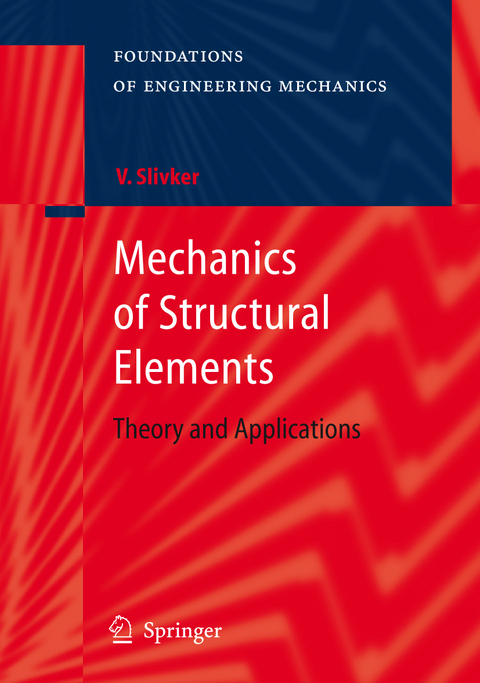
Mechanics of Structural Elements
Springer Berlin (Verlag)
978-3-540-44718-4 (ISBN)
Basic Variational Principles of Static and Geometry in Structural Mechanics.- Basic Variational Principles of Structural Mechanics.- Additional Variational Principles of Structural Mechanics.- Particular Classes of Problems in Structural Mechanics - Part 1.- Particular Classes of Problems in Structural Mechanics - Part 2.- Particular Classes of Problems in Structural Mechanics - Part 3.- Particular Classes of Problems in Structural Mechanics - Part 4.- Particular Classes of Problems in Structural Mechanics - Part 5.- The Ritz Method and its Modifications.- Variational Principles in Spectral Problems.- Variational Principles in Stability/Buckling Analysis.
From the reviews:
"The book is indented for the self-contained reference for the topic, and is aimed at practicing engineers and researchers in the field of mechanics of solids. Graduate, postgraduate and doctoral students of mechanical engineering could benefit from using the book as well. ... This well-written and organized book is a reader-friendly and good-organized manual in the field of variational approaches. It can be highly recommended for experts in mechanics of solids, engineers and for graduate, postgraduate and doctoral students." (Igor Andrianov, Zentralblatt MATH, Vol. 1107 (9), 2007)
| Erscheint lt. Verlag | 23.10.2006 |
|---|---|
| Reihe/Serie | Foundations of Engineering Mechanics |
| Zusatzinfo | XXVII, 787 p. |
| Verlagsort | Berlin |
| Sprache | englisch |
| Maße | 155 x 235 mm |
| Themenwelt | Technik ► Maschinenbau |
| Schlagworte | Analysis • Applied Mechanics • Civil Engineering • Elasticity • mechanical engineering • Mechanics • Shear Theory • stability • Stability Analysis • Strength Analysis • Structural Analysis • Thin-Walled Bars • variational methods • Variational Principles |
| ISBN-10 | 3-540-44718-0 / 3540447180 |
| ISBN-13 | 978-3-540-44718-4 / 9783540447184 |
| Zustand | Neuware |
| Haben Sie eine Frage zum Produkt? |
aus dem Bereich


